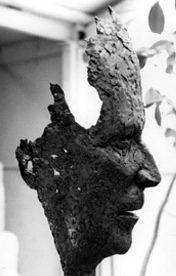The poet’s art
“Big moving flowers on a journey, flowers alive forever,
and that will not cease to grow throughout the world…”
Pictures for Crusoe, “The City”
For Saint-John Perse, poetry was not just about inspiration ; it was a way of life that could enable him “to live better.”
The poet was an avid reader. Surrounded by an impressive library, he annotated books, dictionaries, newspapers and brochures. His poems were nourished by words and expressions he read and by the encyclopedic range of his knowledge. Scientific vocabulary is often present.
The actual writing often took place at night. In Exil (“Exile”) IV Saint-John Perse evokes “night’s poems disowned before the dawn.” Drafts were endlessly revised from the earliest manuscript to the final edition. Their style is marked by unrhymed verses filled with inner harmonies and rhythms, ellipses and enumerations.
As a young man, Saint-John Perse explicitly transformed his handwriting in order to make it more legible but also to achieve visual perfection. Pages reproduced in the Pléiade edition trace the progression from early drafts, which are illegible, to final texts, written in handsome calligraphy. The poet was equally conscious of the layout of his published poems on the page, where he consciously arranged blank space and italics and used an immediately-recognizable typographic style. The appearance of each book was so important to him that the poet often took on the role of layout designer for his volumes.


